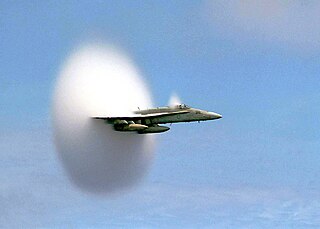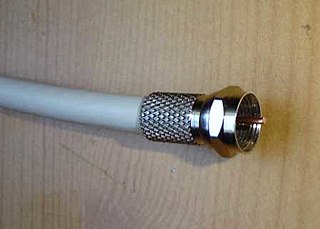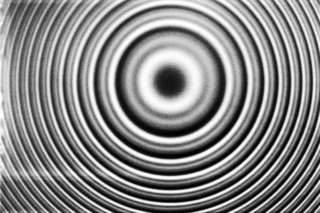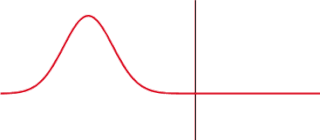Critical distance is, in acoustics, the distance at which the sound pressure level of the direct sound D and the reverberant sound R are equal when dealing with a directional source. As the source is directional, the sound pressure as a function of distance between source and sampling point (listener) varies with their relative position, so that for a particular room and source the set of points where direct and reverberant sound pressure are equal constitutes a surface rather than a distinguished location in the room. In other words, it is the point in space at which the combined amplitude of all the reflected echoes are the same as the amplitude of the sound coming directly from the source (D = R). This distance, called the critical distance  , is dependent on the geometry and absorption of the space in which the sound waves propagate, as well as the dimensions and shape of the sound source.
, is dependent on the geometry and absorption of the space in which the sound waves propagate, as well as the dimensions and shape of the sound source.
In a reverberant space, the sound perceived by a listener is a combination of direct and reverberant sound. The ratio of direct sound is dependent on the distance between the source and the listener, and upon the reverberation time in [the room]. At a certain distance the two will be equal. This is called the "critical distance."
—
Glenn White and Gary Louie (2005) [1]
A reverberant room generates a short critical distance and an acoustically dead (anechoic) room generates a longer critical distance.

In thermodynamics, an adiabatic process is a type of thermodynamic process which occurs without transferring heat or mass between the system and its surroundings. Unlike an isothermal process, an adiabatic process transfers energy to the surroundings only as work. It also conceptually supports the theory used to explain the first law of thermodynamics and is therefore a key thermodynamic concept.

Mach number is a dimensionless quantity in fluid dynamics representing the ratio of flow velocity past a boundary to the local speed of sound.
The propagation constant of a sinusoidal electromagnetic wave is a measure of the change undergone by the amplitude and phase of the wave as it propagates in a given direction. The quantity being measured can be the voltage, the current in a circuit, or a field vector such as electric field strength or flux density. The propagation constant itself measures the change per unit length, but it is otherwise dimensionless. In the context of two-port networks and their cascades, propagation constant measures the change undergone by the source quantity as it propagates from one port to the next.

In electrical engineering, a transmission line is a specialized cable or other structure designed to conduct electromagnetic waves in a contained manner. The term applies when the conductors are long enough that the wave nature of the transmission must be taken into account. This applies especially to radio-frequency engineering because the short wavelengths means wave phenomena arise over very short distances. However, the theory of transmission lines was historically developed to explain phenomena on very long telegraph lines, especially submarine telegraph cables.

An ideal gas is a theoretical gas composed of many randomly moving point particles that are not subject to interparticle interactions. The ideal gas concept is useful because it obeys the ideal gas law, a simplified equation of state, and is amenable to analysis under statistical mechanics. The requirement of zero interaction can often be relaxed if for example the interaction is perfectly elastic or regarded as point like collisions.
The speed of sound is the distance travelled per unit of time by a sound wave as it propagates through an elastic medium. At 20 °C (68 °F), the speed of sound in air is about 343 metres per second, or a kilometre in 2.9 s or a mile in 4.7 s. It depends strongly on temperature as well as the medium through which a sound wave is propagating.
Reverberation, in psychoacoustics and acoustics, is a persistence of sound after the sound is produced. A reverberation, or reverb, is created when a sound or signal is reflected causing numerous reflections to build up and then decay as the sound is absorbed by the surfaces of objects in the space – which could include furniture, people, and air. This is most noticeable when the sound source stops but the reflections continue, their amplitude decreasing, until zero is reached.

In optics, a Fabry–Pérot interferometer (FPI) or etalon is an optical cavity made from two parallel reflecting surfaces. Optical waves can pass through the optical cavity only when they are in resonance with it. It is named after Charles Fabry and Alfred Perot, who developed the instrument in 1899. Etalon is from the French étalon, meaning "measuring gauge" or "standard".
Room acoustics describes how sound behaves in an enclosed space.
The Knudsen number (Kn) is a dimensionless number defined as the ratio of the molecular mean free path length to a representative physical length scale. This length scale could be, for example, the radius of a body in a fluid. The number is named after Danish physicist Martin Knudsen (1871–1949).
The relativistic Breit–Wigner distribution is a continuous probability distribution with the following probability density function,
An orifice plate is a device used for measuring flow rate, for reducing pressure or for restricting flow.

In thermal physics and thermodynamics, the heat capacity ratio, also known as the adiabatic index, the ratio of specific heats, or Laplace's coefficient, is the ratio of the heat capacity at constant pressure to heat capacity at constant volume. It is sometimes also known as the isentropic expansion factor and is denoted by γ (gamma) for an ideal gas or κ (kappa), the isentropic exponent for a real gas. The symbol γ is used by aerospace and chemical engineers.

In stellar physics, the Jeans instability causes the collapse of interstellar gas clouds and subsequent star formation, named after James Jeans. It occurs when the internal gas pressure is not strong enough to prevent gravitational collapse of a region filled with matter. For stability, the cloud must be in hydrostatic equilibrium, which in case of a spherical cloud translates to:

The transmission coefficient is used in physics and electrical engineering when wave propagation in a medium containing discontinuities is considered. A transmission coefficient describes the amplitude, intensity, or total power of a transmitted wave relative to an incident wave.
Acoustic waves are a type of energy propagation through a medium by means of adiabatic compression and decompression. Important quantities for describing acoustic waves are acoustic pressure, particle velocity, particle displacement and acoustic intensity. Acoustic waves travel with a characteristic acoustic velocity that depends on the medium they're passing through. Some examples of acoustic waves are audible sound from a speaker, ground movement from an earthquake, or ultrasound used for medical imaging.
In physics, the Toda oscillator is a special kind of nonlinear oscillator. It represents a chain of particles with exponential potential interaction between neighbors. These concepts are named after Morikazu Toda. The Toda oscillator is used as a simple model to understand the phenomenon of self-pulsation, which is a quasi-periodic pulsation of the output intensity of a solid-state laser in the transient regime.

In geometry, a ball is a region in space comprising all points within a fixed distance from a given point; that is, it is the region enclosed by a sphere or hypersphere. An n-ball is a ball in n-dimensional Euclidean space. The volume of a unit n-ball is an important expression that occurs in formulas throughout mathematics; it generalizes the notion of the volume enclosed by a sphere in 3-dimensional space.

The Two-Rays Ground Reflected Model is a radio propagation model which predicts the path losses between a transmitting antenna and a receiving antenna when they are in LOS. Generally, the two antenna each have different height. The received signal having two components, the LOS component and the multipath component formed predominantly by a single ground reflected wave.
Diffuse field acoustic testing is the testing of the mechanical resistance of a spacecraft to the acoustic pressures during launch.
This page is based on this
Wikipedia article Text is available under the
CC BY-SA 4.0 license; additional terms may apply.
Images, videos and audio are available under their respective licenses.















